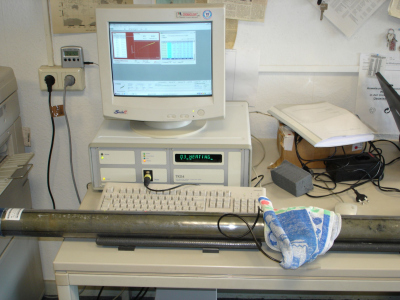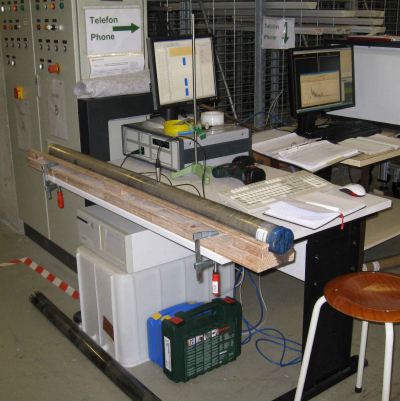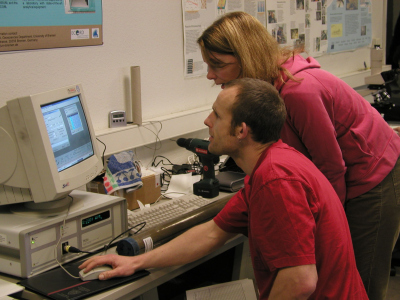Thermal conductivity
Thermal conductivity is measured with the TeKa TK04 system using the needle-probe method in full-space configuration for soft sediments (Von Herzen and Maxwell, 1959). Thermal conductivity measurements are taken where material is suitable, into which the TK04 needles can be inserted without risk of damage subsequent to removal of either the top or bottom end cap. The needle probe contains a heater wire and calibrated thermistor. It is assumed to be a perfect conductor, as it is significantly more conductive than the unconsolidated sediments that it is measuring. To measure the thermal conductivity of more consolidated material, a small hole can be drilled into the material to allow the needle probe to be inserted. Cores are brought into the laboratory and allowed to equilibrate to room temperature over a 12 h period. Generally, thermal conductivity (k) is calculated from the following:
The correct choice of t1 and t2 is complex, and commonly thermal conductivity is calculated from the maximum interval (t1, t2) along the heating curve where k(t) is constant. In the early stages of heating, the source temperature is affected by the contact resistance between the source and the full space, and in later stages it is affected by the finite length of the heating source (assumed infinite in theory). The special approximation method (SAM), employed by the TK04 software, is fitted to the heating curve for selected time intervals. In a good measurement, several hundred time intervals along the heating curve can be matched. The best solution is the one that most closely corresponds to the theoretical curve, and this is the output thermal conductivity. Ten measuring cycles are automatically performed at each sampling location and, when obtained, the closest three are used to calculate an average thermal conductivity.






